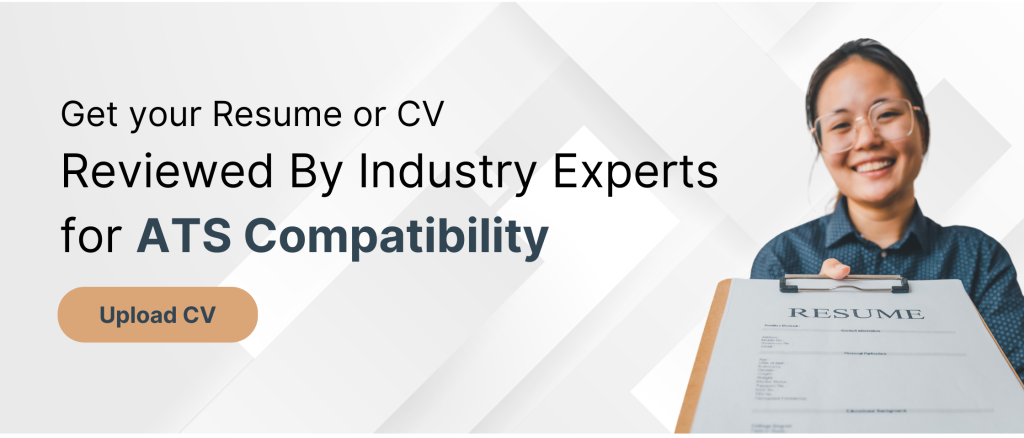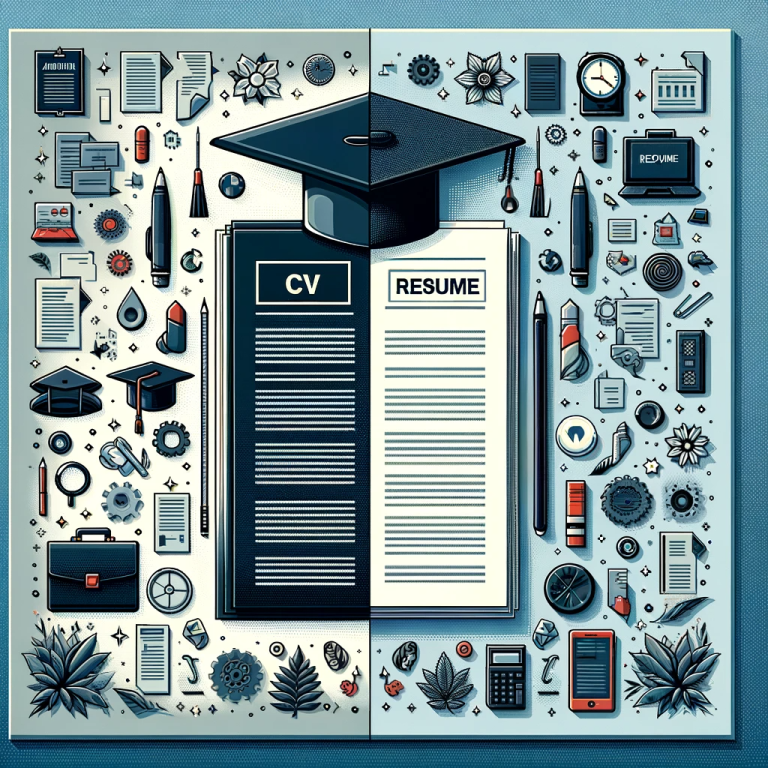Inbox to Interview: How to Make Your Resume Email Stand Out [+Examples]
Emailing a resume is a critical step in the job application process, yet it often goes overlooked. In today’s competitive job market, emailing your resume is often the first step towards landing your dream job. However, simply sending your resume without careful consideration can lead to missed opportunities. Here’s a detailed guide on how to email a resume effectively to stand out from the crowd and get noticed by potential employers.
Overview of what you will be learning through this Blog:
| The Art of Crafting the Perfect Resume Email | Subject Line Strategies email body blueprint highlighting your resume in the email customising your message for each application Effective attachment practices follow-up etiquette common mistakes to avoid |
| How to Email a Resume to Get a Job | Start with a strong subject line Craft a concise, engaging email body Highlight your resume appropriately Personalize your email for each application Follow up politely |
| Examples of Successful Resume Emails | Analysis of Real-Life Examples |
| Creating a Professional Signature | Elements to Include |
| Utilizing LinkedIn and Other Platforms | Connecting Email to Professional Profiles |
| The Importance of Networking Emails | Crafting a Networking Email, When to Send |
| Key Takeaways for Successful Resume Emails | |
| FAQs |
The Art of Crafting the Perfect Resume Email
Crafting an email for your resume involves more than just attaching a file and hitting send. It requires attention to detail, from the subject line to the email body.
Subject Line Strategies
The subject line is your first impression. Tailor it to the job you’re applying for, making it clear and attention-grabbing.
Examples include “Experienced Marketing Professional Applying for Senior Coordinator Position – Jane Doe” or “Application for Graphic Designer Role – John Smith Portfolio Attached.”
Email Body Blueprint
Your email’s body should briefly introduce you, explain why you’re a great fit for the role, and express your enthusiasm for the opportunity.
Keep it concise and to the point.
Highlighting Your Resume in the Email
Decide whether to attach your resume or embed a link to an online portfolio.
Use professional formats and clearly name your files, like “John_Smith_Resume.pdf.”
Customizing Your Message for Each Application
Personalize each email to reflect the company’s culture and the specifics of the job listing.
Use your research to tailor your message, showing that you’re genuinely interested in the role.
Effective Attachment Practices
Stick to universally readable formats like PDF.
Name your documents professionally, incorporating your name and the word “resume.”
Follow-Up Etiquette
Following up shows your interest and initiative. Wait about a week before sending a polite follow-up email.
Common Mistakes to Avoid
Avoid sending generic emails or including too much information.
Tailor each email, and keep it focused and relevant.
How to Email a Resume to Get a Job
Start with a Strong Subject Line
The subject line of your email is the first thing a hiring manager will see, making it crucial to grab their attention. Your subject line should be clear, professional, and reflective of the content of your email. Include the job title you are applying for and your full name to ensure it is easily identifiable.
For instance, “Application for Marketing Manager Position – Jane Doe” is straightforward, professional, and informative.
Tips for Crafting an Effective Subject Line:
- Be Specific: Mention the job title and your name.
- Keep it Short: Aim for less than 50 characters to ensure it’s fully visible on mobile devices.
- Avoid Spammy Words: Words like “Free,” “Help,” or excessive use of exclamation points can trigger spam filters.
Craft a Concise, Engaging Email Body
Your email body serves as an introduction and should complement, not repeat, your resume. Start with a polite greeting, followed by a brief introduction of yourself and why you are writing. Mention how you found the job listing or if someone referred you. Clearly state your interest in the position and briefly highlight your qualifications that make you a good fit for the role. Conclude with a polite sign-off and your contact information.
Key Components of the Email Body:
- Greeting: Use a professional salutation like “Dear [Hiring Manager’s Name]”.
- Introduction: State the purpose of your email succinctly.
- Qualifications: Summarize your key skills and experiences relevant to the job.
- Closing: Express gratitude for their consideration and include a professional sign-off.
Highlight Your Resume Appropriately
Your resume should be attached to the email unless the job listing specifies otherwise. Ensure your resume file is in a widely accessible format, such as PDF, and named professionally (e.g., “JaneDoe_Resume.pdf”).
If applicable, you can also include a link to your professional online portfolio or LinkedIn profile to provide the employer with more context about your background and skills.

Best Practices for Attaching Your Resume:
- File Format: Use a PDF to maintain formatting.
- File Name: Include your name and the word “resume” for easy identification.
- Cover Letter: If you’re including a cover letter, attach it as a separate document or include it in the body of the email if instructed.
Personalize Your Email for Each Application
Customization can significantly increase your chances of getting noticed. Research the company and the position to tailor your email, highlighting how your skills and experiences align with the job description and company culture. Use the company’s language and mention any specific projects or values that resonate with you. This shows the employer that you have a genuine interest in the position and have taken the time to personalize your application.
Customization Tips:
- Company Research: Mention something specific about the company that excites you.
- Match the Job Description: Highlight experiences that directly relate to the job requirements.
Follow Up Politely
If you haven’t heard back within a week or two, it’s appropriate to send a polite follow-up email. Reiterate your interest in the position and mention your previous email. Keep the follow-up brief and respectful, acknowledging their busy schedule.
Follow-Up Email Tips:
- Be Patient: Wait at least one to two weeks before following up.
- Keep It Short: Briefly express your continued interest in the position.
- Professional Tone: Maintain a courteous and professional tone throughout.
Examples of Successful Resume Emails
Crafting a successful resume email is an art that combines professionalism with personal touch. Here are examples of effective resume emails for different scenarios, highlighting the key components that make them stand out.
Example 1: Direct Application
Subject Line: Application for Content Marketing Manager – Alex Johnson
Email Body:
Dear Hiring Manager,
I am writing to express my interest in the Content Marketing Manager position listed on your website. With over five years of experience in content strategy and digital marketing, I am excited about the opportunity to contribute to [Company Name]’s growth and success.
In my current role at [Current Employer], I led a team to increase web traffic by 40% and significantly boost online engagement through targeted content campaigns. I am particularly drawn to [Company Name] because of your commitment to innovative marketing strategies and your impressive brand development.
I have attached my resume and a link to my professional portfolio for your consideration. I am looking forward to the possibility of discussing how my skills and experiences align with [Company Name]’s goals.
Thank you for considering my application. I am eager to bring my background in content marketing and my passion for storytelling to your team.
Warm regards,
Alex Johnson
[Phone Number]
[LinkedIn Profile URL]
Example 2: Referral
Subject Line: John Smith Referral – Application for Graphic Designer Role
Email Body:
Dear [Hiring Manager’s Name],
I hope this email finds you well. I am reaching out to apply for the Graphic Designer position at [Company Name], as recommended by John Smith, a current member of your team. John and I worked together at [Previous Company], where I honed my skills in branding, web design, and digital graphics.
My portfolio, attached, showcases a wide range of projects that demonstrate my creativity and ability to increase brand visibility through design. I am particularly impressed with [Company Name]’s innovative approach to marketing and design, and I am enthusiastic about the opportunity to contribute to your creative team.
Please find my resume and portfolio attached for your review. I am very excited about the possibility of working at [Company Name] and contributing to your team’s success.
Thank you for considering my application. I look forward to the opportunity to discuss my candidacy further.
Best wishes,
[Your Full Name]
[Your Contact Information]
[LinkedIn Profile or Portfolio URL]
Example 3: Follow-Up
Subject Line: Follow-Up: Application for Project Manager Position – Jane Doe
Email Body:
Dear [Hiring Manager’s Name],
I hope this message finds you well. I wanted to follow up on my application for the Project Manager position I submitted on [Submission Date]. I am very interested in the opportunity to join [Company Name] and believe my background in managing high-profile projects in [Your Industry] makes me a strong match for this role.
I am particularly excited about the prospect of bringing my expertise in team leadership and project optimization to [Company Name], contributing to your goals of [specific company goals or projects mentioned in the job listing].
I understand the need to find the best fit for your team and am eager to discuss how my experiences align with [Company Name]’s needs. Thank you once again for considering my application. I look forward to the possibility of contributing to your team.
Warm regards,
Jane Doe
[Phone Number]
[LinkedIn Profile URL]
Creating a Professional Signature
Your email signature should include your full name, phone number, and LinkedIn profile or professional website, offering easy access to more information about you.
Utilizing LinkedIn and Other Platforms
Link your email to your professional online presence, making it easy for employers to learn more about you.

The Importance of Networking Emails
Networking emails can precede or follow your application, helping you establish connections within the company.
Key Takeaways for Successful Resume Emails:
- Clear and Professional Subject Line: Mention the job title, your name, or a referral if applicable.
- Personalized Greeting: Address the hiring manager by name whenever possible.
- Concise Introduction: State the purpose of your email, how you found the job, or mention a referral.
- Highlight Key Qualifications: Briefly summarize your relevant experiences and achievements.
- Express Enthusiasm: Show genuine interest in the role and the company.
- Professional Sign-Off: Thank the reader for their time and include your contact details.
Crafting your resume email with these components will increase your chances of making a strong first impression and moving forward in the application process.
Conclusion
Emailing your resume is your first opportunity to make a lasting impression on potential employers. By following these detailed steps—crafting a strong subject line, writing a concise and engaging email body, highlighting your resume appropriately, personalizing your email for each application, and following up politely—you’ll increase your chances of landing your dream job. Remember, attention to detail and personalization can set you apart in a competitive job market.
FAQs About Emailing Your Resume
When you’re applying for jobs via email, it’s essential to understand the nuances to ensure your application is noticed. Below, we’ll dive into some frequently asked questions about emailing your resume, offering detailed explanations to guide you through the process.
How often should I follow up on my application?
Following up on your application is crucial, but there’s a fine line between being persistent and being pushy. It’s advisable to wait for about a week after sending your initial application before following up. This gives the hiring manager enough time to review your application without feeling pressured. If you haven’t received a response after your first follow-up, it’s acceptable to send one more follow-up email a couple of weeks later. However, if there’s still no response, it’s best to move on and focus on other opportunities. Persistent follow-ups beyond this can reflect poorly on your professionalism.
Should I use a template for my resume email?
Using a template can be a helpful starting point, especially if you’re unsure how to structure your email. However, it’s vital to customize your message for each application. Personalization shows that you’ve taken the time to tailor your application to the specific job and company, demonstrating genuine interest. While a template can guide your email’s format, ensure you adapt the content to reflect the job description, mention specific details about the company that attract you, and highlight how your skills and experience make you an ideal candidate.
Is it okay to send a resume without a job listing?
Yes, sending a resume without a specific job listing, known as a speculative application, can be a proactive job search strategy. This approach can be particularly effective in industries where networking plays a crucial role in hiring decisions. When sending a speculative application, research the company thoroughly and tailor your email and resume to show how you could add value to their team. It’s also a good idea to express your flexibility regarding potential roles that match your skills and experience.
How can I make my resume email stand out?
To make your resume email stand out, start with a personalized and clear subject line that captures the essence of your application. In the email body, briefly introduce yourself and explain why you’re interested in the company and how your skills align with their goals. Personalization is key; mention specific projects or aspects of the company culture that resonate with you. Ensure your resume is well-organized, visually appealing, and highlights your achievements. Including a professional signature with your contact information and LinkedIn profile can also add a polished touch to your email.
What’s the best time to send a resume email?
Timing can influence the visibility of your email. Generally, it’s best to send your resume email early in the week, such as Monday or Tuesday. This timing increases the chances of your email being opened and considered before the week’s workload peaks. Avoid sending emails over the weekend or on holidays, as they’re likely to be buried by other incoming messages by the time the recipient returns to work. Mornings are typically the most effective time to send emails, as they’re more likely to be seen among the first batch of daily emails.
🔴Do you have an ATS (Automatic tracking system) Compliant CV?
🔴Do you have a CV which is globally acceptable?
🔴Do you have professional content in your CV?
✅Get your CV designed and developed today !! Professionally .
Get your Resume reviewed for free by industry experts: Click


![How to Add Action Verbs to Your Resume or CV [200+ Examples]](https://prosumely.com/wp-content/uploads/2024/02/DALL·E-2024-02-05-16.05.08-A-visually-engaging-and-professional-blog-post-cover-image-featuring-a-resume-and-a-bright-light-bulb-symbolizing-innovation-and-action.-The-image-sho-768x768.webp)
![How to Add Experience in Your CV [With Examples]](https://prosumely.com/wp-content/uploads/2024/02/DALL·E-2024-02-01-19.50.00-A-visually-engaging-square-cover-image-for-a-blog-titled-How-to-Add-Experience-in-Your-CV-With-Examples.-The-image-should-feature-a-sleek-profess-768x768.png)


